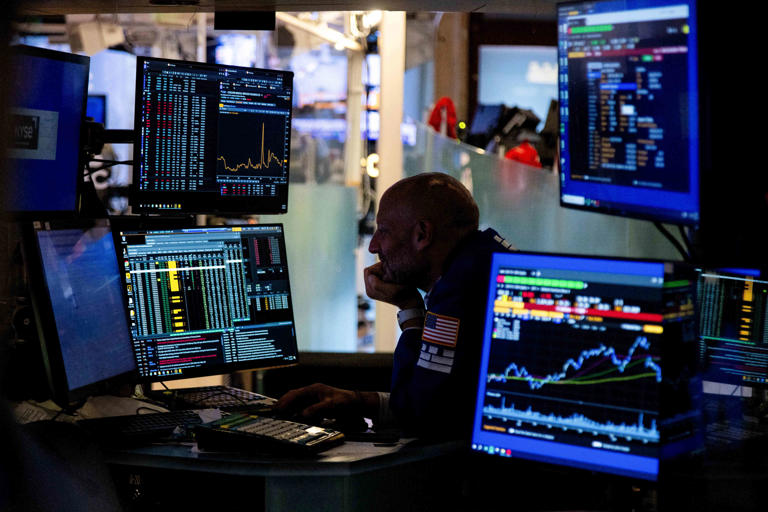The recent surge in stock market volatility has been striking, with the S&P 500 experiencing its highest average daily movement since March 2023. Over the past 10 days, the index’s average daily move was 1.02%, marking a significant increase from the relative stability observed between June 6 and July 9. During this earlier period, the S&P 500 did not exhibit any daily fluctuations greater than 1%. However, this calm was disrupted by a soft inflation report released just two days before July 11, which caught Wall Street off guard and intensified expectations for potential interest rate cuts.
The rising volatility has been compounded by a series of factors, including corporate earnings reports and broader economic concerns. This week, four of the world’s largest technology companies reported their quarterly results, which contributed to the heightened market fluctuations. Notably, there were three days in which the S&P 500 moved more than 1%, underscoring the impact of these earnings announcements on market stability.
Several factors have driven this recent increase in volatility. The soft inflation report from last month has emerged as a key contributor. Before this data was released, the S&P 500 enjoyed a period of relative calm, with minimal daily swings. The unexpected inflation figures sparked speculation about potential Federal Reserve rate cuts, leading to increased market turbulence. This shift in expectations has added to the overall volatility in the stock market.
Furthermore, the earnings reports from major technology companies have exacerbated market fluctuations. Investors have become increasingly concerned about the significant capital expenditures being made by these firms. Technology giants like Alphabet (GOOGL), Microsoft (MSFT), and Amazon (AMZN) have been heavily investing in artificial intelligence (AI), purchasing semiconductors, real estate, and data center hardware to meet the rising demand for AI technologies. While these investments are intended to keep these companies competitive, they have raised questions among investors about the sustainability of such high spending levels.
For instance, while Meta Platforms (META) reported better-than-expected earnings, Amazon’s disappointing results reignited concerns about the potential risks associated with heavy AI spending. The market’s reaction to these earnings reports has been volatile, as investors reassess their positions and expectations based on the performance and spending strategies of these major tech companies.
In addition to corporate earnings, broader economic concerns have also contributed to the recent volatility. The July jobs report revealed a significant increase in the unemployment rate to 4.3%, raising fears of a potential economic recession. This unexpected rise in unemployment has led to heightened concerns about the overall health of the economy.
Federal Reserve Chair Jerome Powell’s recent comments have added another layer of complexity to the market outlook. While Powell has indicated that the Fed might consider rate cuts, the abrupt slowdown in the labor market has led some to question whether the Fed’s actions might come too late to mitigate potential economic downturns. Powell acknowledged the Sahm Rule, a recession indicator based on the rapid increase in the unemployment rate, but emphasized that other indicators, such as the inverted yield curve, have long suggested a recession that has yet to materialize. He described the current labor market as showing signs of normalization, with slowing wage growth and fewer job vacancies, but indicated that the Fed is prepared to respond if the situation deteriorates further.
Following the disappointing jobs report, financial markets have adjusted their expectations for future rate cuts. According to the CME Group’s FedWatch tool, the market is now pricing in 125 basis points (1.25 percentage points) of rate cuts for 2024, a notable increase from the previous day’s expectation of 75 basis points. The likelihood of a half-point rate cut at the September Federal Open Market Committee (FOMC) meeting has also risen to 72.5%, up from 22% the day before.
The recent surge in volatility reflects a period of heightened uncertainty in the markets. Investors are grappling with a mix of economic data, corporate earnings reports, and shifting expectations about Federal Reserve policy. As these factors continue to evolve, market participants will be closely monitoring upcoming economic indicators and central bank actions to navigate the shifting landscape and adjust their investment strategies accordingly.
